Chasing the scenes of Hitchcock’s America, from Rear Window to North By Northwest, and all the way to the President’s nose.
In honour of the release of the biopic Hitchcock, we created Hitchcock’s America – a tour of the US following the landmarks of some of the director’s most famous scenes. Yesterday we showed you the dark and brooding California of Hitchcock’s America. Today, we take a look at Hitchcock’s New York from a Rear Window, and travel North By Northwest to President Lincoln’s nose.
Hitchcock’s America: Rear Window
Unless you fancy crossing America by car, and you certainly wouldn’t be the first, at this point we advise you ditch and fly east. Next stop: Greenwich Village on Manhattan’s west side.
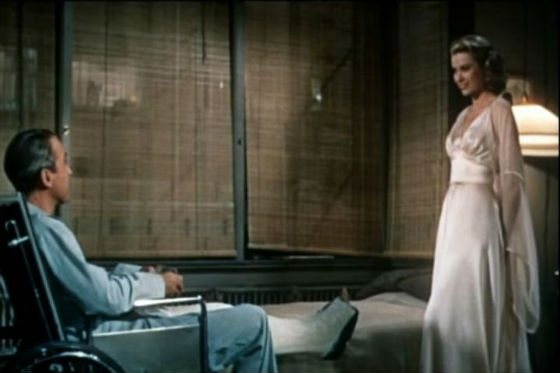 Alfred Hitchcock’s Rear Window is the story of photographer L.B. “Jeff” Jefferies (James Stewart) who, following an accident whilst out on a job, becomes wheelchair-bound and prisoner in his Greenwich Village apartment. Bored quite literally out of his mind, Jeff begins to spy on his neighbours’ apartments with binoculars and a telephoto camera. As Jeff uncovers what he believes to be gravely suspicious goings-on, he becomes obsessed. Is it all in his head, or are dark forces at work?
Alfred Hitchcock’s Rear Window is the story of photographer L.B. “Jeff” Jefferies (James Stewart) who, following an accident whilst out on a job, becomes wheelchair-bound and prisoner in his Greenwich Village apartment. Bored quite literally out of his mind, Jeff begins to spy on his neighbours’ apartments with binoculars and a telephoto camera. As Jeff uncovers what he believes to be gravely suspicious goings-on, he becomes obsessed. Is it all in his head, or are dark forces at work?
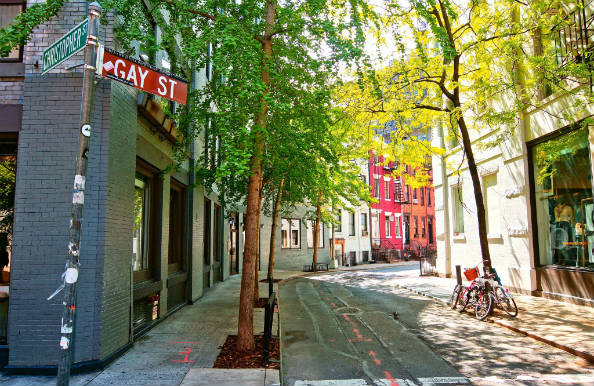 Greenwich Village is a fascinating and enthrallingly alternative area of New York City, certainly worth the visit whether you’re paying homage to Hitchcock or broadening your Broadway repertoire. Often referred to simply as ‘The Village’, this was the bohemian centre of the ‘50s and focal point of the hedonistic Beat Movement – think post-war writers and poets, Jack Kerouac and William S Burroughs, loose clothes, psychedelic drugs and free love. Now more gentrified as an influx of upper middle classes pushed up property prices, nevertheless The Village still retains its vibrant swing of old: quaint cafes, art galleries, international delicatessens, and bars where people tend to click fingers instead of clapping.
Greenwich Village is a fascinating and enthrallingly alternative area of New York City, certainly worth the visit whether you’re paying homage to Hitchcock or broadening your Broadway repertoire. Often referred to simply as ‘The Village’, this was the bohemian centre of the ‘50s and focal point of the hedonistic Beat Movement – think post-war writers and poets, Jack Kerouac and William S Burroughs, loose clothes, psychedelic drugs and free love. Now more gentrified as an influx of upper middle classes pushed up property prices, nevertheless The Village still retains its vibrant swing of old: quaint cafes, art galleries, international delicatessens, and bars where people tend to click fingers instead of clapping.
Hitchcock’s America: North by Northwest
The final furlong of the Hitchcock’s America tour follows the character Roger O Thornhill (Cary Grant), as he is chased by a secretive agency from New York to Chicago until finally, and perhaps fittingly, he ends up in a chase scene at Mount Rushmore. In Hitchcock’s comic thriller North by Northwest, Thornhill is mistaken as a CIA operative – the mysterious ‘George Kaplan’. The clandestine organisation suspects Kaplan of intending to thwart their plans to smuggle government secrets out of the country, and hunt him down.
A blistering game of cat-and-mouse ensues which has Hitchcock’s protagonist running for his life, conveniently through several points of interest.
Thornhill – an advertising executive working out of 650 Madison Avenue, which is now the headquarters of Ralph Lauren – begins his adventure at The Plaza. The Plaza overlooks 5th Avenue and Central Park and features in several other movies, including Sleepless in Seattle and “Crocodile” Dundee. Partly due to being particularly near the Wollman Ice Rink, and partly for its show-stealing role in Home Alone II, The Plaza is in many ways archetypal of Christmas in New York.
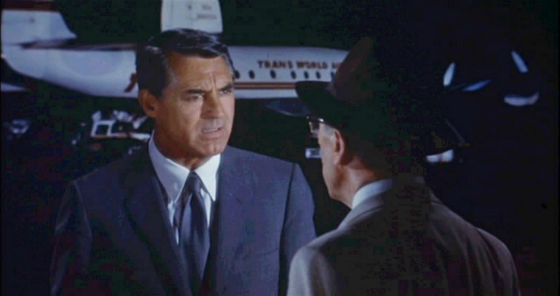 With little other evidence on why Thornhill is being pursued, the initial signs lead him – now you – to the UN Headquarters, on the banks of the East River.
With little other evidence on why Thornhill is being pursued, the initial signs lead him – now you – to the UN Headquarters, on the banks of the East River.
The UN Headquarters is a must-see for any holiday to New York. A scene recognisable from countless live newscasts and movies, nobody can mistake the 193 flags of its member states at the foot of the slotted riverfront high-rise Secretariat Building and the tell-tale concave, domed block that is the General Assembly.
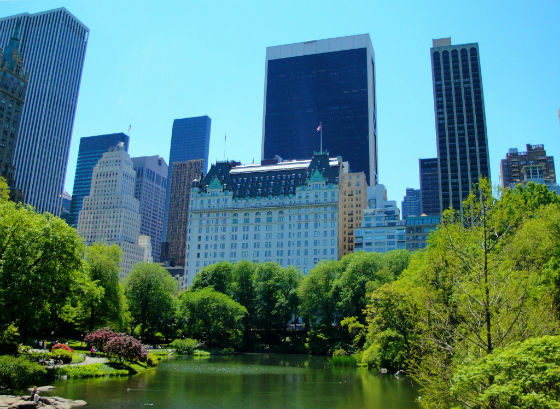 The four buildings that house the beating heart of UN debate have welcomed visitor tours for over 60 years, from Monday to Friday. February this year marks the launch of its children’s tour, for kids aged 5-12 years old.
The four buildings that house the beating heart of UN debate have welcomed visitor tours for over 60 years, from Monday to Friday. February this year marks the launch of its children’s tour, for kids aged 5-12 years old.
It should be noted that the UN does not conduct audio tours any longer, and currently the General Assembly itself is closed to the public for renovations. However, following a renovation of its own, the Conference Building of the UN is reopening early this year, and visitors can also attend fascinating lectures at the UN.
With over a million visitors per year, it is worth booking a UN tour in advance. Find out here.
Hitchcock was never actually allowed to film in the UN. The scenes inside were studio mock-ups after taking some appropriately secretive photography inside. Even outside no filming was allowed, and so the ‘scene’ where Cary Grant walks into the UN was, well, Cary Grant walking into the UN. Those aren’t extras walking in with him.
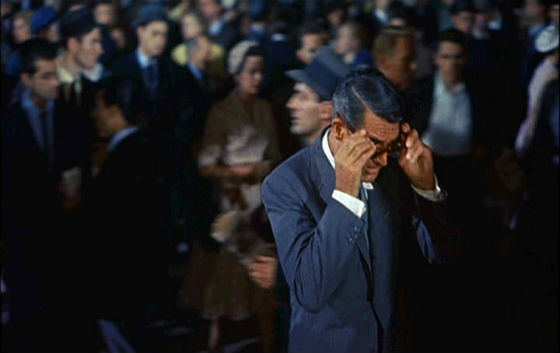 Following an altercation that leaves Thornhill falsely accused of the murder of a UN official, the would-be spy turns fugitive, bound for Chicago aboard iconic train the 20th Century Limited, which unfortunately is no longer operational. There is a direct train from the Big Apple to the Second City if you wish to stay true to Hitchcock’s film, though Amtrak perhaps doesn’t quite manage the heroic portrait of its famous predecessor. But if like myself you’re using Hitchcock’s America as convenient excuse to see an alternative America, I’d suggest flying.
Following an altercation that leaves Thornhill falsely accused of the murder of a UN official, the would-be spy turns fugitive, bound for Chicago aboard iconic train the 20th Century Limited, which unfortunately is no longer operational. There is a direct train from the Big Apple to the Second City if you wish to stay true to Hitchcock’s film, though Amtrak perhaps doesn’t quite manage the heroic portrait of its famous predecessor. But if like myself you’re using Hitchcock’s America as convenient excuse to see an alternative America, I’d suggest flying.
Chicago is as much the wonder of modern architecture as New York, perhaps even more so. Since becoming home to the world’s first skyscraper – The Home Insurance Building – in 1884, Chicago went on to be a playground of sorts for architects. The striking designs of the unique skyline we see today are the result. But Chicago was always somewhat of a playground, and the effortlessly cool, relaxed vibe is still true of the Chicago of today. Chicago is a delightfully friendly slice of the Midwest, an exceptionally clean, green city, exemplary of America’s metropolises, and a fascinating place to boot. Highlights include the viewing deck of Willis Tower, the Shedd Aquarium, the Natural History Museum and the Art Institute of Chicago – famously the home of Edward Hopper’s 1942 oil masterpiece Nighthawks.
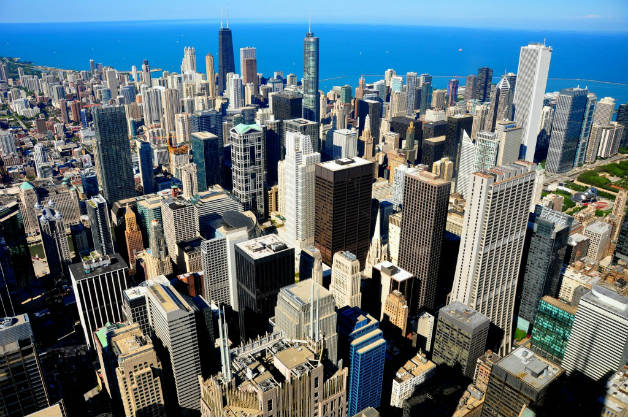 From Chicago, Hitchcock’s protagonist heads an hour and half’s drive south to northwestern Indiana’s agricultural countryside. Here an attack by a crop-dusting biplane and a near-miss with a petrol truck lend themselves to one of the most famous, and one of the most parodied, sequences in cinema. Oddly the fields where this sequence was shot are not in Indiana at all, but near Bakersfield north of Los Angeles, a little stretch of west California that was clearly a favourite spot for Hitchcock, if yesterday’s section of our Hitchcock tour is anything to go by.
From Chicago, Hitchcock’s protagonist heads an hour and half’s drive south to northwestern Indiana’s agricultural countryside. Here an attack by a crop-dusting biplane and a near-miss with a petrol truck lend themselves to one of the most famous, and one of the most parodied, sequences in cinema. Oddly the fields where this sequence was shot are not in Indiana at all, but near Bakersfield north of Los Angeles, a little stretch of west California that was clearly a favourite spot for Hitchcock, if yesterday’s section of our Hitchcock tour is anything to go by.
Indianapolis, where Thornhill is dropped off, is an industrious as much as it is a sporting US city. Its downtown is regarded by press as one of the finest in the US and famously features one central canal. Though perhaps the city is most noted for the Indianapolis Motor Speedway’s Indianapolis 500, a blistering motor racing spectacle that feels like a more rudimentary version of Formula 1, and is just as thrilling.
Lastly, from Chicago, Thornhill is pursued to the film’s dramatic climax at Mount Rushmore, near Rapid City, South Dakota.
Unfortunately, you cannot climb the stone heads without express permission of the National Park Service. And this was indeed the same when Hitchcock was filming. At the time there was the concern that filming a candid chase scene across the stone faces might devalue their image. Indeed, Thornhill at one point was supposed to hide in Lincoln’s nose. As it was, filming around Mount Rushmore was highly restricted and the film’s signature chase sequence unfortunately happened in a studio.
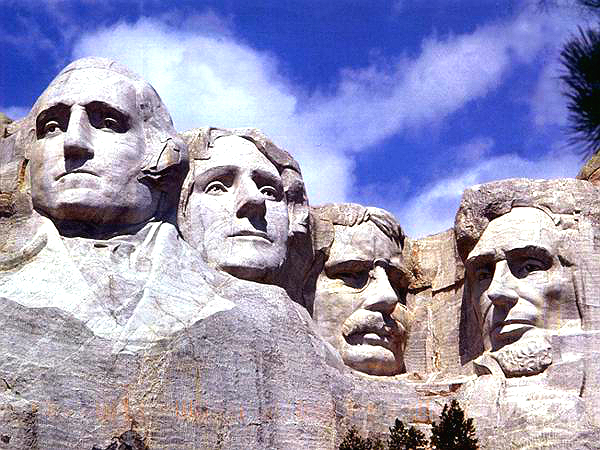
Having travelled North By Northwest to reach the bedrock that symbolises the founding of this country, this would seem an appropriate endpoint to our Hitchcock tour of the US. Of course, you could stand and look at giant stone heads of America’s forefathers, solemnly appreciating the country’s short but intense history. Then again, you could sit at the site of Hitchcock’s crucial murder scene, in the cafeteria at the bottom. Carver’s Café’s $6 fry-up is remarkably good.


Leave a Reply
You must be logged in to post a comment.